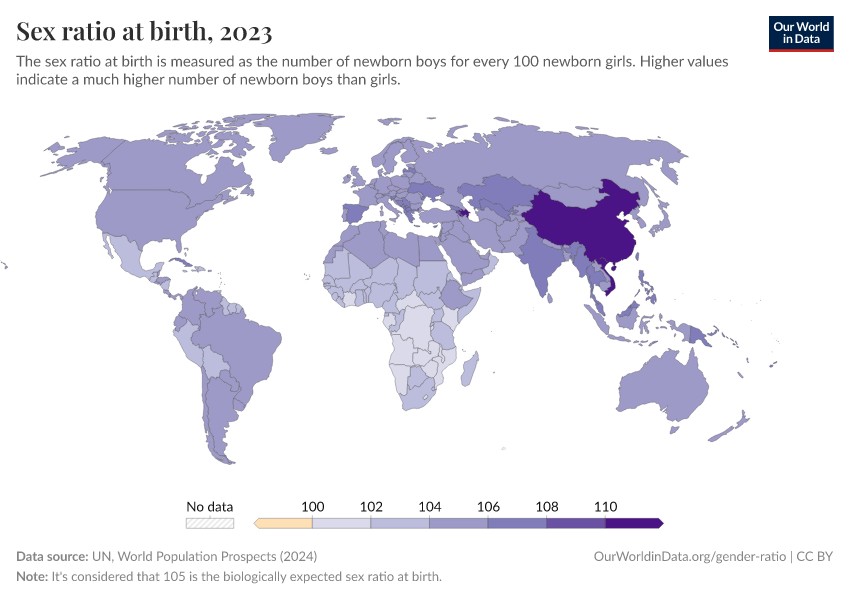Globally, the ratio of men to women is nearly equal, hovering around 101 men for every 100 women. However, this seemingly balanced figure masks significant variations across regions and age groups, driven by a complex interplay of biological, social, and cultural factors. This article delves into the global gender ratio, exploring the reasons behind these disparities and their potential consequences.
The Global Gender Landscape: A Closer Look
While the overall global sex ratio suggests near parity, a deeper analysis reveals a more nuanced picture.
Natural Male Bias at Birth
Biological factors contribute to a slight male bias at birth. Globally, the natural sex ratio is around 105 male births for every 100 female births. This is primarily attributed to higher female fetal mortality rates during pregnancy.
Shifting Ratios Across the Lifespan
As populations age, the sex ratio gradually shifts. Higher male mortality rates in childhood and throughout adulthood, largely due to biological vulnerabilities and behavioral factors, contribute to a decline in the proportion of men. By age 70, the global average drops to approximately 86 men per 100 women, with an even more dramatic shift in the oldest age brackets.
Regional Variations in Sex Ratios
Significant deviations from the global average exist in certain regions. Countries in South and East Asia, particularly India and China, exhibit a lower female-to-male ratio, often attributed to cultural preferences for sons and resulting sex-selective practices. Conversely, Eastern European nations tend to have a higher female proportion due to significantly higher male mortality rates. Migration patterns also play a role, with some Middle Eastern countries experiencing a male surplus due to male-dominated immigration.
Skewed Sex Ratios: Unnatural Imbalances
In several countries, the sex ratio deviates significantly from the naturally expected range. This imbalance is largely driven by cultural preferences for sons, leading to practices like sex-selective abortion and, in extreme cases, infanticide.
The “Missing Women” Phenomenon
The stark reality of gender imbalance is encapsulated in the concept of “missing women,” referring to the estimated number of women who would be alive if sex discrimination were absent. Estimates suggest a staggering 100 million or more missing women globally, primarily concentrated in countries with strong son preferences.
Consequences of Gender Imbalance
The ramifications of skewed sex ratios extend beyond demographics, impacting social stability, individual well-being, and economic development. A surplus of men can lead to increased competition for partners, potentially contributing to social unrest, violence, and trafficking of women. Furthermore, it can reinforce traditional gender roles and limit opportunities for women.
Factors Influencing Gender Bias
A multitude of factors contribute to gender bias and resulting sex ratio imbalances. Economic factors, cultural norms, religious beliefs, and access to technology all play a significant role. While economic development can lead to lower fertility rates, which in turn may exacerbate son preference in smaller families, higher education levels tend to correlate with reduced gender bias.
Conclusion
The global gender ratio is a complex issue with far-reaching consequences. While biological factors contribute to a slight male bias at birth, societal and cultural influences often lead to significant deviations from the natural balance. Addressing the root causes of gender discrimination and promoting gender equality are crucial steps towards achieving a more equitable world.
